Published 07/04/2025
| Last Updated 29/10/2025
|
Reading Time
minutes
Reducing waiting times is a critical issue for constituents, clinicians, and policymakers alike. Long waits can delay diagnoses, prolong suffering, and increase pressure on emergency services. The data below aims to support scrutiny and inform debate, helping the Senedd and the public understand both the scale of the challenge and the direction of travel.
The data presents a visual overview of NHS waiting times in Wales, focusing on progress against the Welsh Government’s five key ambitions for planned care recovery, as set out in its 2022 transformation plan:
- Ambition 1: No one waiting longer than a year for their first outpatient appointment by the end of 2022
- Ambition 2: Eliminate waits longer than two years in most specialties by March 2023
- Ambition 3: Eliminate waits longer than one year in most specialties by Spring 2025
- Ambition 4: Speed up diagnostic testing and reporting to eight weeks, and therapy interventions to 14 weeks, by Spring 2024
- Ambition 5: Ensure cancer diagnosis and treatment within 62 days for 80% of people by 2026
The graphs below illustrate monthly data on patient pathways from January 2020 to the most recent figures available. A patient pathway represents the journey from referral to treatment. Importantly, one patient may be on several pathways, so the figures do not represent individual patients.
Data on NHS waiting times are published every month on StatsWales.
The Welsh Government now publishes provisional data, enabling some targets to be reported around a month earlier than previously—reducing the former seven-week delay. As this data is provisional and subject to revision, it is not included in the graphs below.
|
|
Click on the boxes to see other ambitions
Ambition 1: No one waiting longer than a year for their first outpatient appointment by the end of 2022
In August 2025, 71,709 patient pathways were waiting over 53 weeks (more than a year) for their first out-patient appointment.
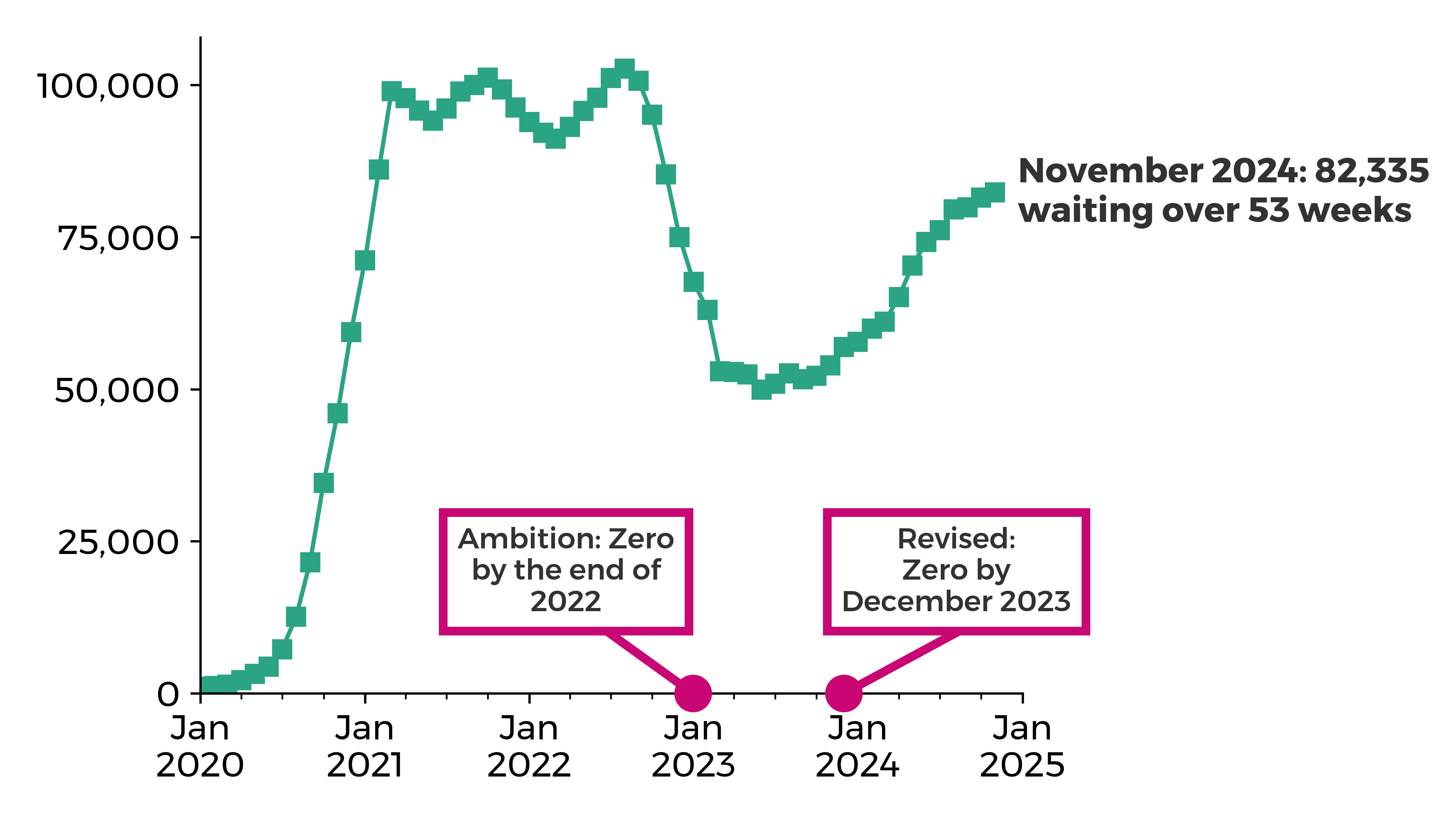
Source: StatsWales, Patient pathways waiting 26 weeks, 36 weeks, one year and two years, September 2011 and onwards
Ambition 2: Eliminate the number of people waiting longer than two years in most specialties by March 2023
In August 2025, 2,129 patient pathways were waiting over 105 weeks (more than two years) for trauma and orthopaedic treatments, 1,464 for ophthalmology treatments and 1,458 for general surgery.
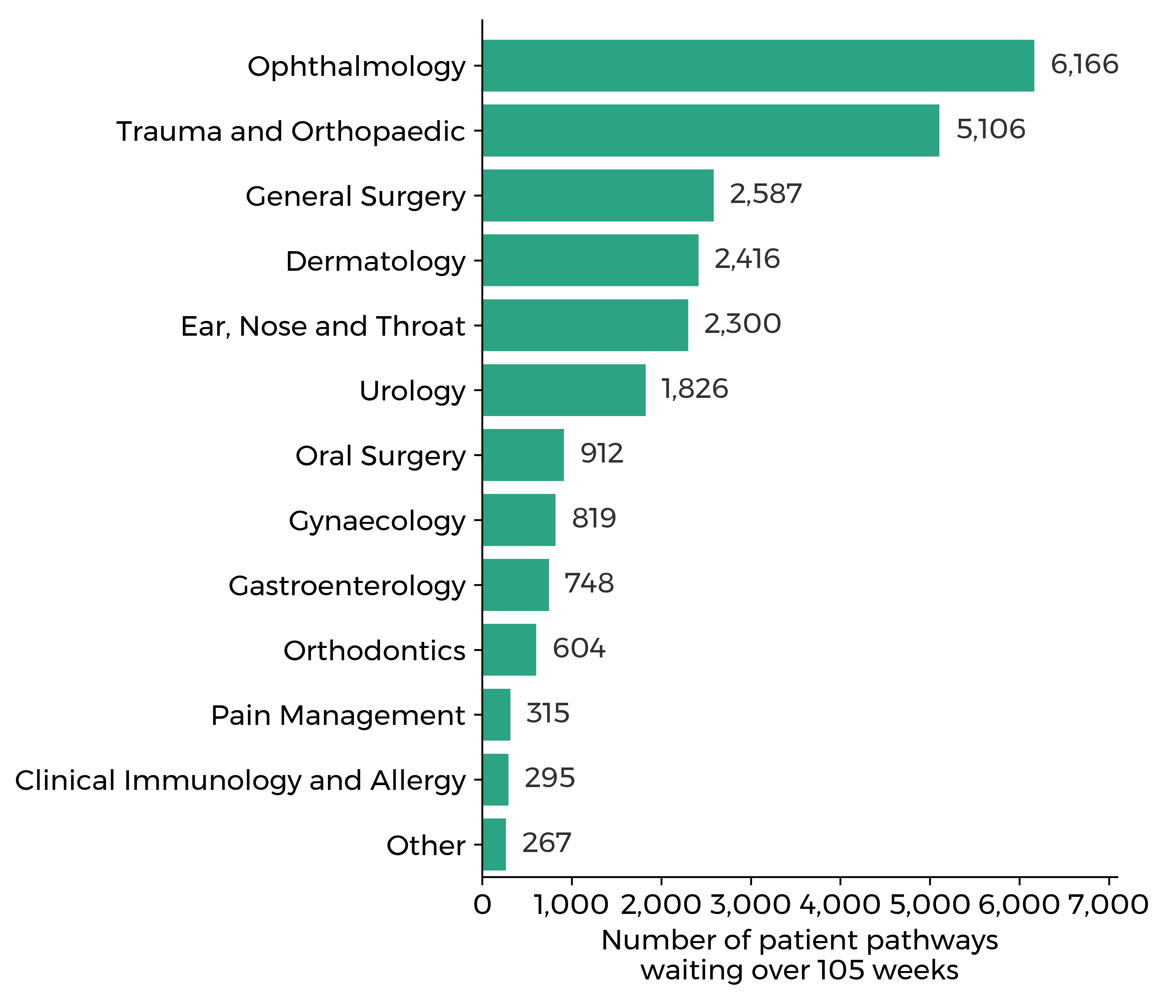
Source: StatsWales, Referral to treatment pathways waiting to start treatment, August 2024 onwards
Ambition 3: Eliminate the number of people waiting longer than one year in most specialties by Spring 2025
In August 2025, 31,149 patient pathways were waiting over 53 weeks (more than a year) for trauma and orthopaedic treatment, 29,392 for ophthalmology and 17,279 for general surgery treatments.
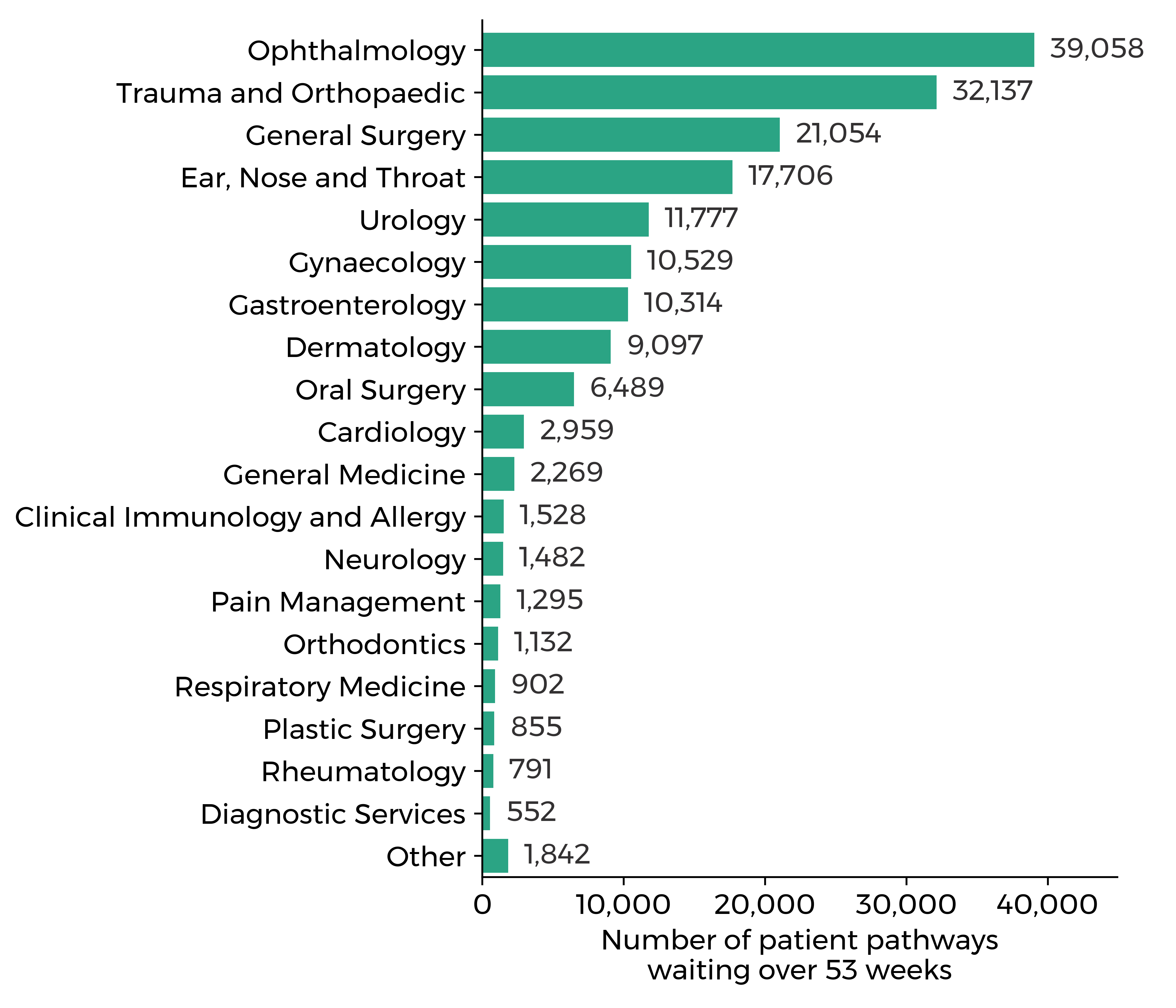
Source: StatsWales, Referral to treatment pathways waiting to start treatment, August 2024 onwards
Ambition 4: Increase the speed of diagnostic testing and reporting to eight weeks and 14 weeks for therapy interventions by Spring 2024
In August 2025, 46,678 patient pathways were waiting 8 weeks or more for diagnostic services. A further 4,837 patient pathways were waiting over 14 weeks for therapy services.
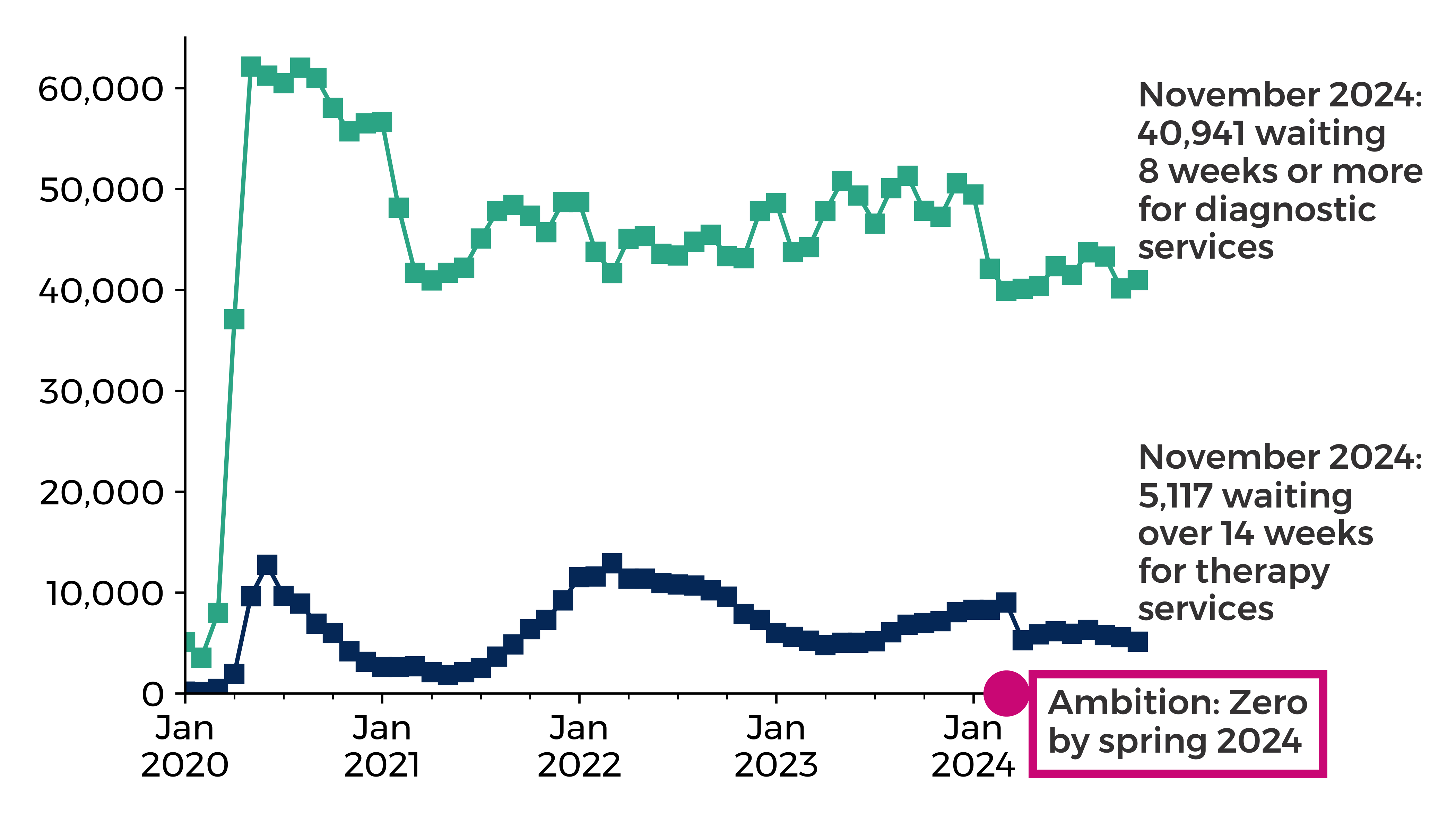
Source: StatsWales, Diagnostic services: pathway waiting times, grouped weeks waiting, October 2009 onwards, Therapy services: pathway waiting times, grouped weeks waiting, October 2009 onwards
Ambition 5: Cancer diagnosis and treatment to be undertaken within 62 days for 80% of people by 2026
In August 2025, 61.8% of people who received a cancer diagnosis started their first definitive treatment within 62 days from the first point cancer was suspected.
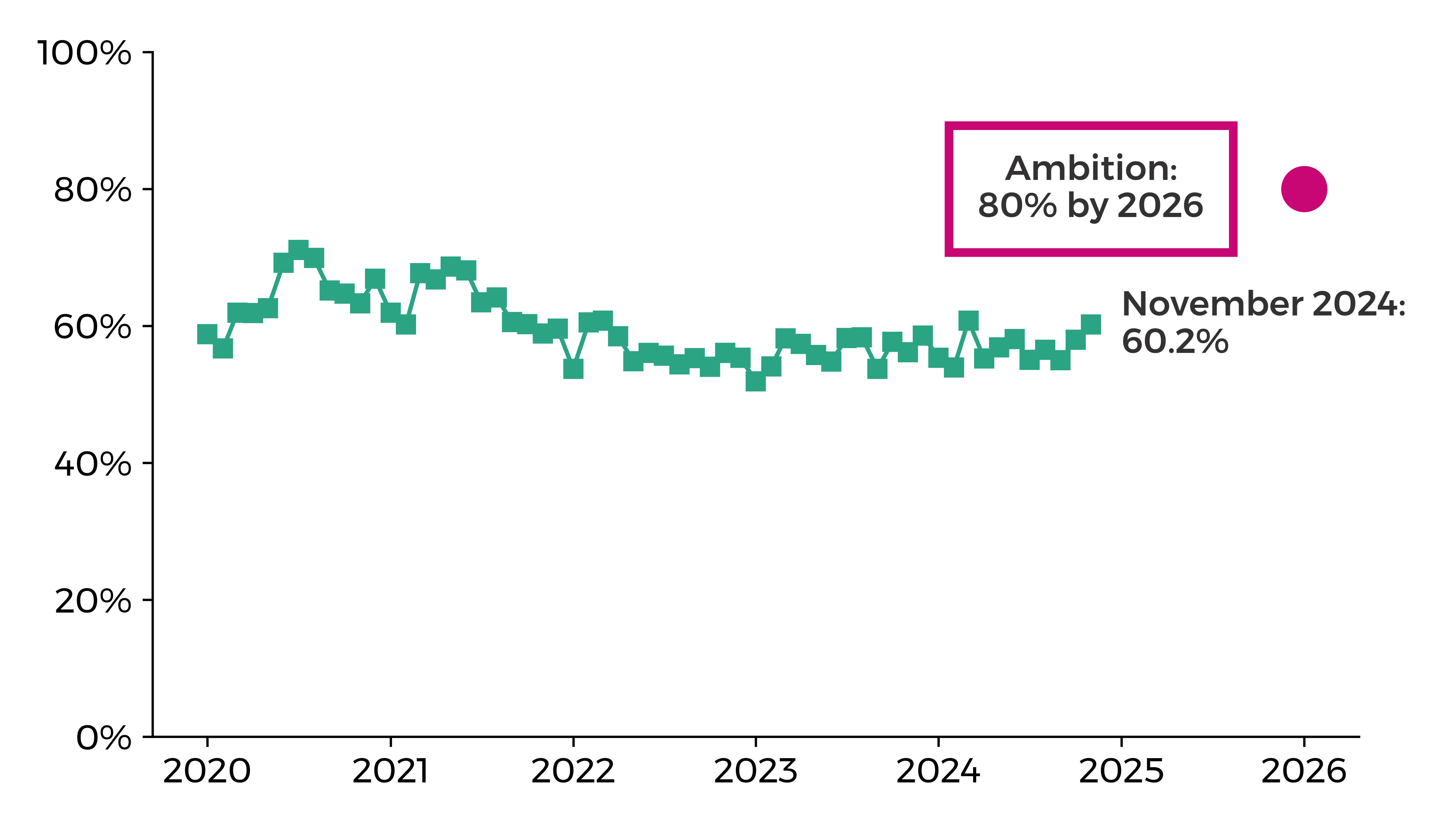
Source: StatsWales, Cancer waiting times: patients starting treatment and patients informed they do not have cancer, June 2019 onwards
|
Article by Sarah Hatherley, Helen Jones and Joe Wilkes, Senedd Research, Welsh Parliament











